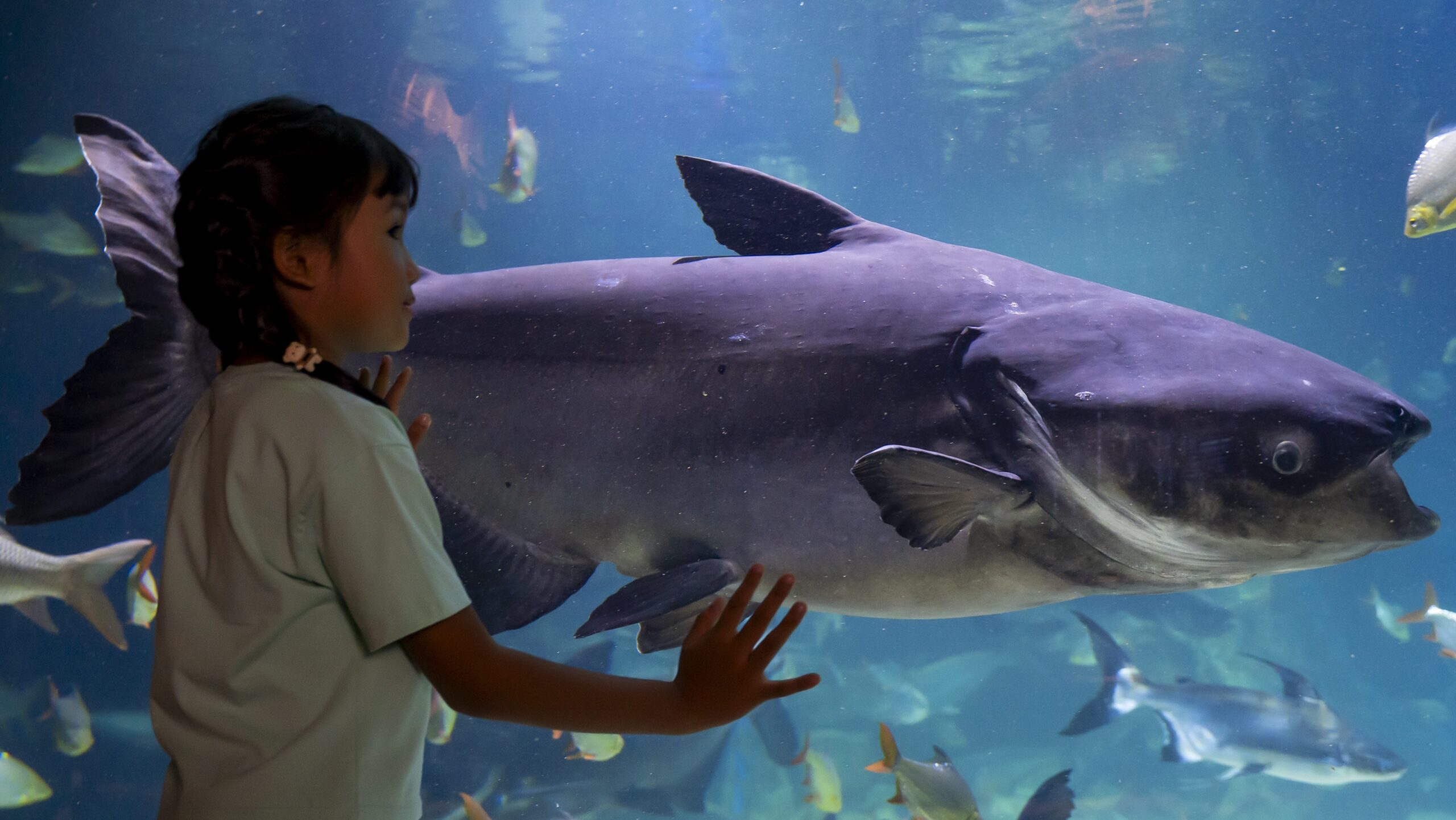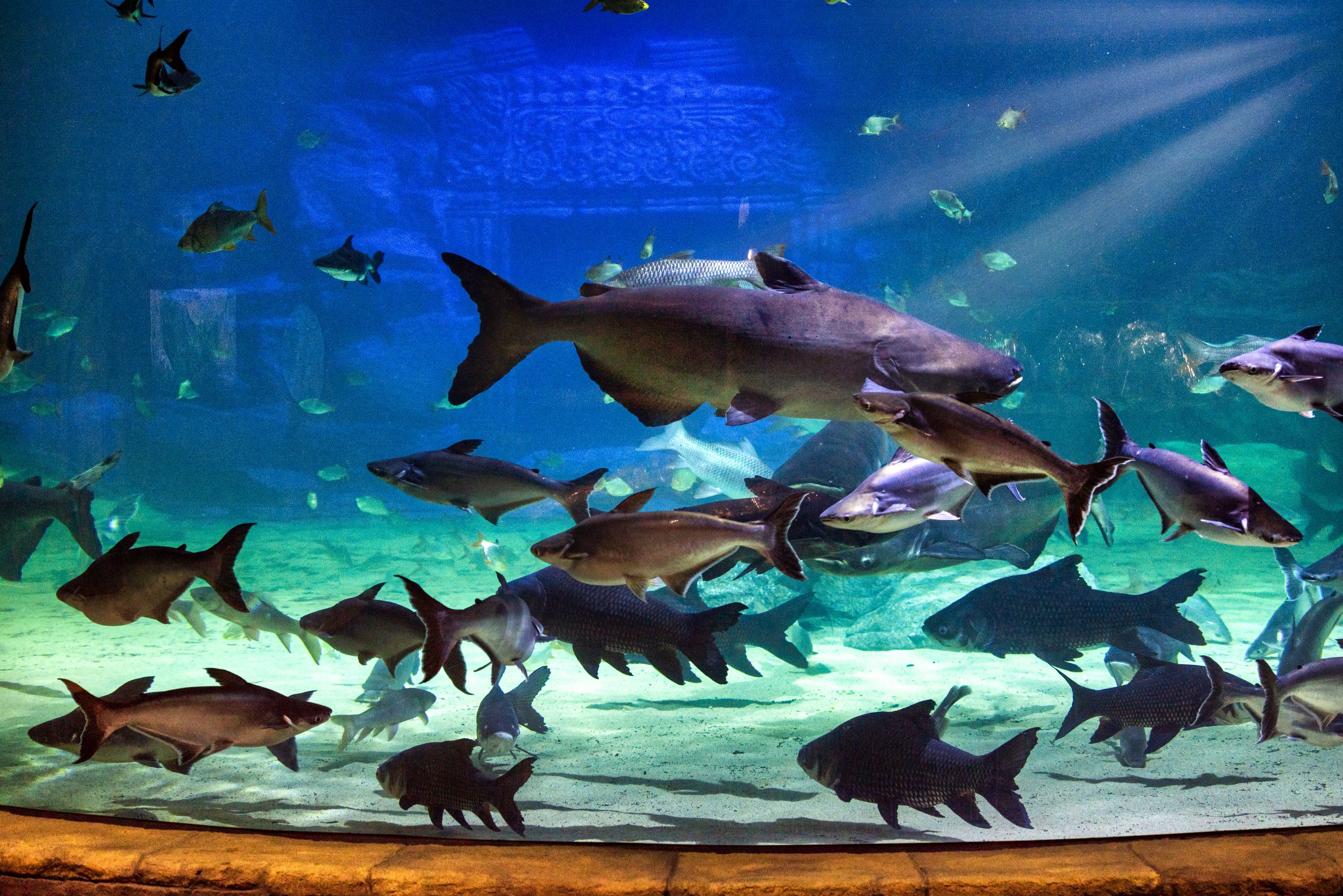Revealing the Secrets of the Mekong Giant Catfish by Biologist Experts from Angkor Wildlife and Aquarium (AWA)

Mekong Giant Catfish inhabit the turbid and muddied water of the mighty Mekong River and its tributaries, so it may have been their introduction into AWA’s crystal clear water that has given these fish their vision to grow to 1.7m already!
The Mekong River's Majestic Species
AWA’s x6 Giant Catfish were previously rescued from a privately owned, closed-bodied Lake and rescued to their current residence at AWA’s 500,000 Liter freshwater Mekong Aquarium.
With some of the fastest growth rates of any fish species, Mekong Giant Catfish is the second largest freshwater fish in the world (#1 also being a resident of the Mekong River, the Giant Freshwater Stingray recorded at up to 300kg!), regularly sizing to 200kg and living up to 60 years.

Indigenous communities of the Mekong believe it’s a sacred fish because it persists on plant matter and ‘meditates’ in the deep, stony pools of the Mekong River, somewhat like a Buddhist monk.
Despite its immense size, the Giant Catfish lacks teeth and is predominantly a ‘filter-feeder’, mostly feeding on zooplankton, algae, bacteria, and larvae.
At AWA, the Mekong Giant Catfish are fed a combination of plankton-like foodstuffs and nutritious pellets, a spectacle that unfolds daily as our divers hand-feed the animals using bottles.

Safeguarding the Future of a Sacred Species
Mekong giant catfish is believed to spend much of its time feeding in Cambodia’s Tonle Sap Lake and then migrating hundreds of miles north to spawning grounds in Thailand.
However, conservationists are deeply concerned for the fish’s future. Historic catches suggest the population was once between a hundred and a thousand times larger than it is today.

In Cambodia, a tagging and release program operates for several big Mekong fish species that are caught in nets stationed in the main river channels. These species include the giant barb, the giant freshwater stingray, and the river catfish. The fish are tagged, measured, and then released, with fishermen compensated for the return of these fish to the wild.
AWA & ICM are proud to have provided an appropriate space for these gentle giants, accommodated with the highest husbandry standards, and where more can be observed and understood about what is normally a behaviorally cryptic species, both educating about and preserving their wild counterparts and the ecosystems they occupy.